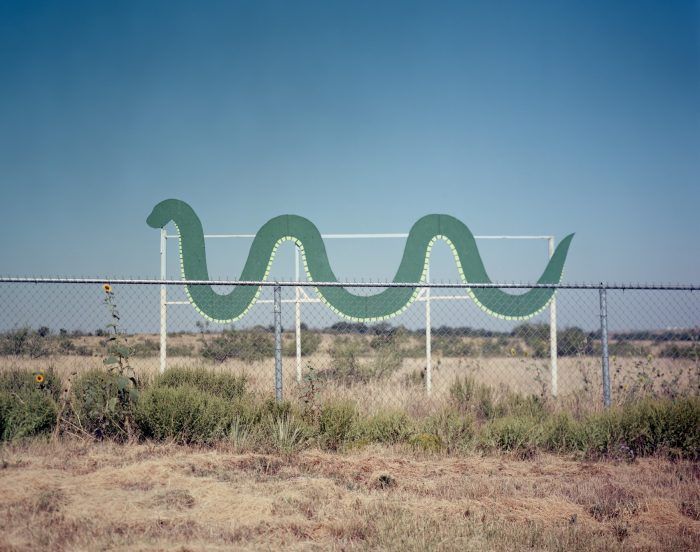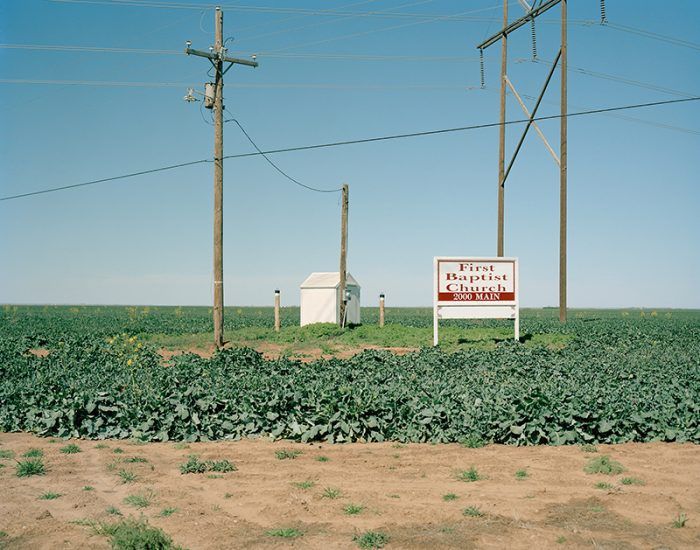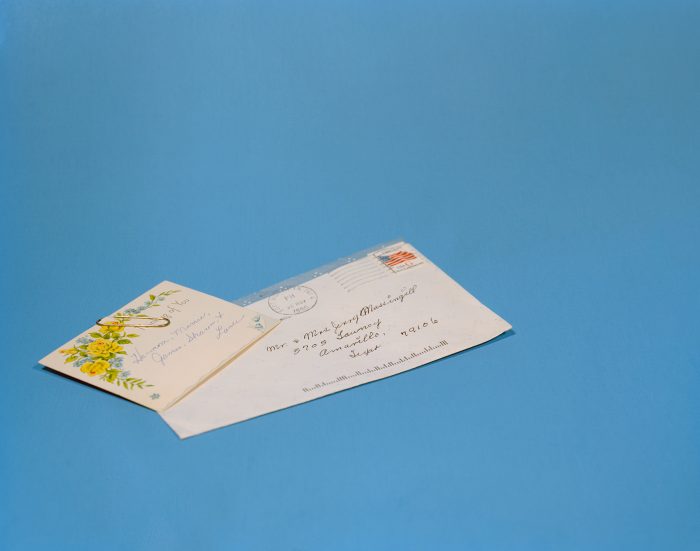blog
Interview with photographer Bailey Dale

Cary Benbow (CB): What compels you to make the images you create, and why are you drawn to your subjects?
Bailey Dale (BD): At a young age I was drawn to photography and the many possibilities that came from the medium, however it wasn’t until I was exposed to the realm of photography as art that I began to understand how to use the camera as an investigative tool. For my 7 Shades of Yellow series, I use photography to reconnect myself with a location that I have grown apart from, yet am increasingly drawn to. I honestly can’t imagine using another medium that would capture the stillness of my hometown as well as the view camera, and photography has been my greatest resource for understanding the world around me.
CB: What is the idea behind your series ‘7 Shades of Yellow’?
BD: The images serve as a documentation of my hometown in Amarillo, TX. Amarillo has such a stagnant feeling to it, and although it’s one of the largest towns in the Texas Panhandle, it feels small in the way that it never seems to change much over the years. After I moved away for college, I really became aware of how distinct the towns across the Panhandle are in comparison to the rest of the state. Amarillo is right in the heart of the “Bible Belt” and this played a huge role in how I was raised. As I’ve evolved as person, especially now that I no longer live there, I’ve began to notice certain ideologies of the area that often contradict each other, something that I was never aware of as a young child. Photographing Amarillo has helped me see the town from an outsider’s perspective, and has allowed me to recreate my entire understanding of a town that I called home for nineteen years.

CB: Is this series different from other projects you’ve done?
BD: These images are fairly different from my previous projects. I never had a tendency to photograph still lives or locations until I started this series, so beforehand I was primarily photographing portraits. When I started ‘7 Shades’, I knew I wanted to steer clear of using any people in my images because I wanted each scene to feel somewhat abandoned or uninhabited; as I no longer live there. It’s been an interesting leap from what I was accustomed to shooting, however I think this project has helped me work through the tendency to only stick to what I’m comfortable with.
CB: In your opinion, what makes a good photograph?
BD: I’m most drawn to photographs that are subtle, or modest even, in their makeup yet the content behind them is strong. If an image is visually pleasing but lacks any real meaning or purpose in why it was made, I can’t really spend too much time on it. It’s really important to me to strive for work that is both well made and purposeful, because I think you really need both factors in order to have the drive to continue a project and allow it to expand. The photographs that stick around in my mind after I see them are always the ones that challenge me to see something from a new perspective.
 CB: Where do you get the inspirations for your personal photography?
CB: Where do you get the inspirations for your personal photography?
BD: Most of the inspirations for my photography, specifically with this series, comes from the town itself. Each time I visit home I spend hours driving around and pay a lot of attention to how the people there interact; and I try to forget anything that is too familiar to me from my childhood. However, I also spend time looking at other photographers who have worked on similar documentary projects, as well as those who have focused on religion as their subject.

CB: What/who are your photography inspirations – and why?
BD: My two greatest inspirations for this series have been Christian Patterson and Stephen Shore. Stephen Shore is a given as he photographed Amarillo as well for his series Uncommon Places and for his Amarillo Postcards, so I feel incredibly lucky to have such a great resource for inspiration. I’m really drawn to Shore’s Uncommon Places because he seemed to find so many perfectly subtle nuances of each town that a native would recognize, yet more than likely ignore if they weren’t frozen in a photograph. This idea has been a huge driving point for me in how I wanted to capture Amarillo. Christian Patterson’s series Bottom of the Lake, which is also a documentation of his hometown, really opened up my eyes to the different ways of how memories of an area can be expressed. His incorporation of still-lifes were so exciting to me when I first saw them. I think his telephone installation is so brilliant. I was so interested in how much I connected with Patterson’s photographs, even though I had no personal connection to his hometown.
CB: How would you describe your work to someone viewing it for the first time?
BD: I would describe my work as a documentary approach to rediscovering an old location. The images are meant to feel quiet while also conveying a feeling that there’s much more happening beyond the surface.

CB: How is the work in your portfolio significantly different (or similar) to any editorial or commercial photo work you do?
BD: All of the editorial and commercial work I do, minus a few portraits here and there, is all done digitally and feels much more contemporary than 7 Shades of Yellow. I always enjoy taking part in the fast-paced environment of the editorial world; however it’s really refreshing how much working with film requires you to stop and take your time while shooting. The end result is so much more rewarding when you’ve spent months just trying to get one shot perfectly captured.
CB: What does the label “emerging artist” mean to you?
BD: To me, an emerging artist fits well with the transition that happening in my life right now. As my career as a student comes to an end, I’m focusing more time on my personal work by completing projects and finally getting them out into the world.
To see more work by Bailey Dale, visit her website – www.baileydale.com
Location: Online Type: Featured Photographer, Interview
Events by Location
Post Categories
Tags
- Abstract
- Alternative process
- Architecture
- Artist Talk
- artistic residency
- Biennial
- Black and White
- Book Fair
- Car culture
- Charity
- Childhood
- Children
- Cities
- Collaboration
- Community
- Cyanotype
- Documentary
- Environment
- Event
- Exhibition
- Faith
- Family
- Fashion
- Festival
- Film Review
- Food
- Friendship
- FStop20th
- Gender
- Gun Culture
- Habitat
- Hom
- home
- journal
- Landscapes
- Lecture
- Love
- Masculinity
- Mental Health
- Migration
- Museums
- Music
- Nature
- Night
- nuclear
- p
- photographic residency
- Photomontage
- Plants
- Podcast
- Portraits
- Prairies
- Religion
- River
- Still Life
- Street Photography
- Tourism
- UFO
- Water
- Zine

Leave a Reply